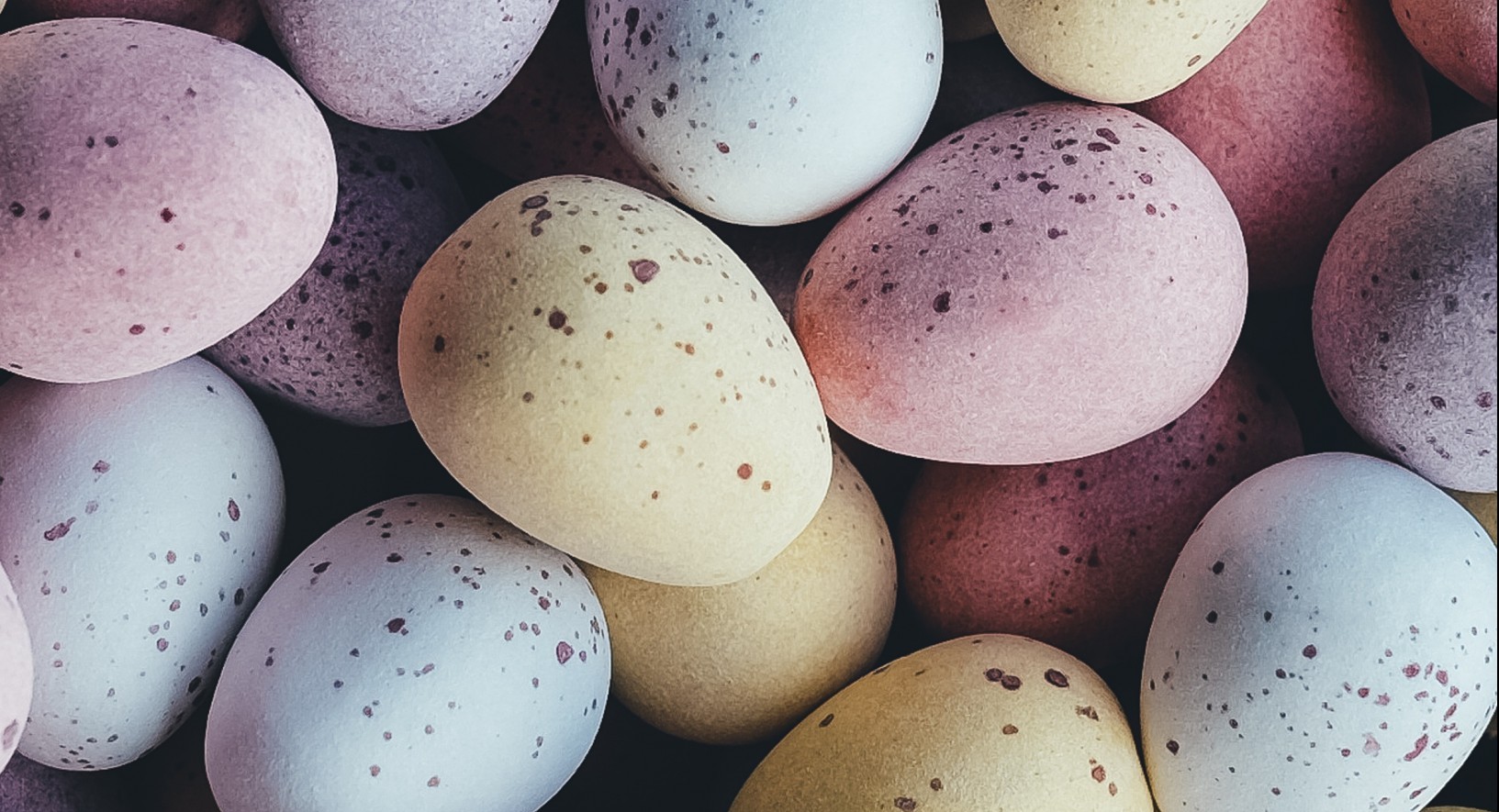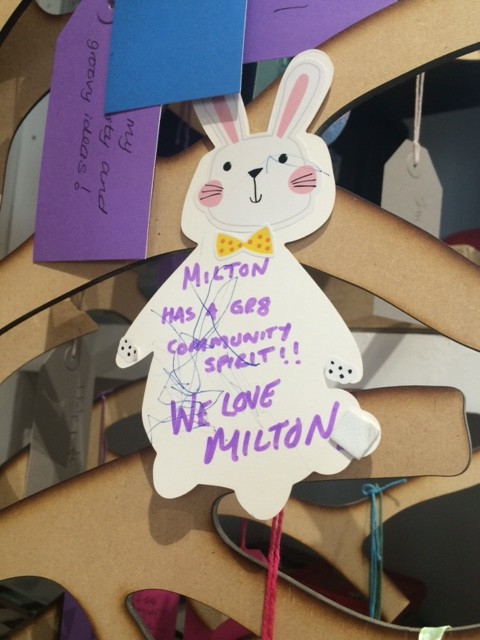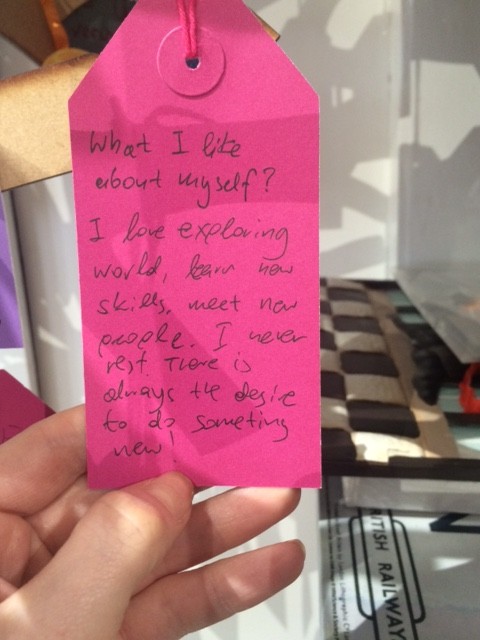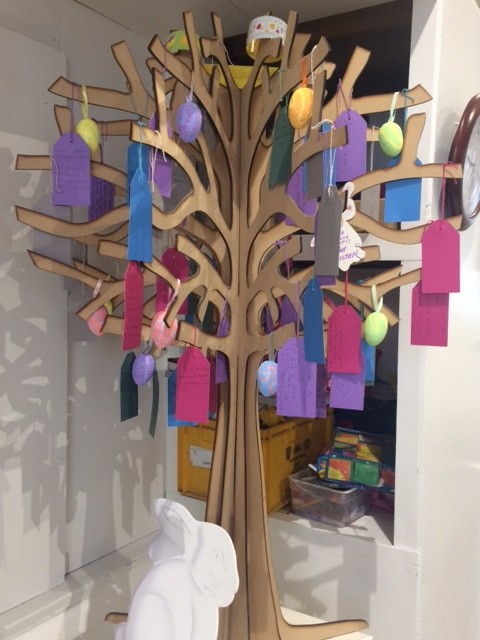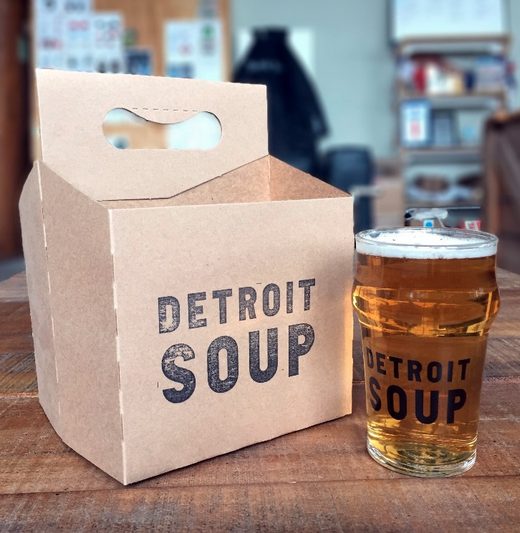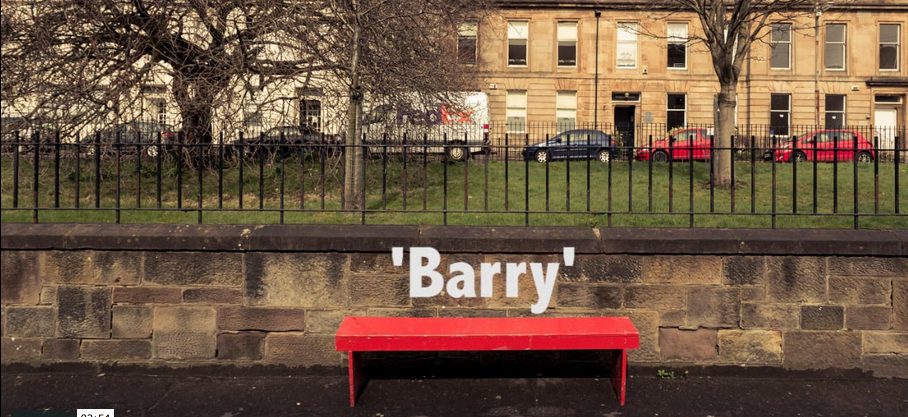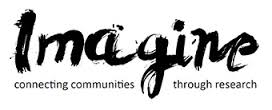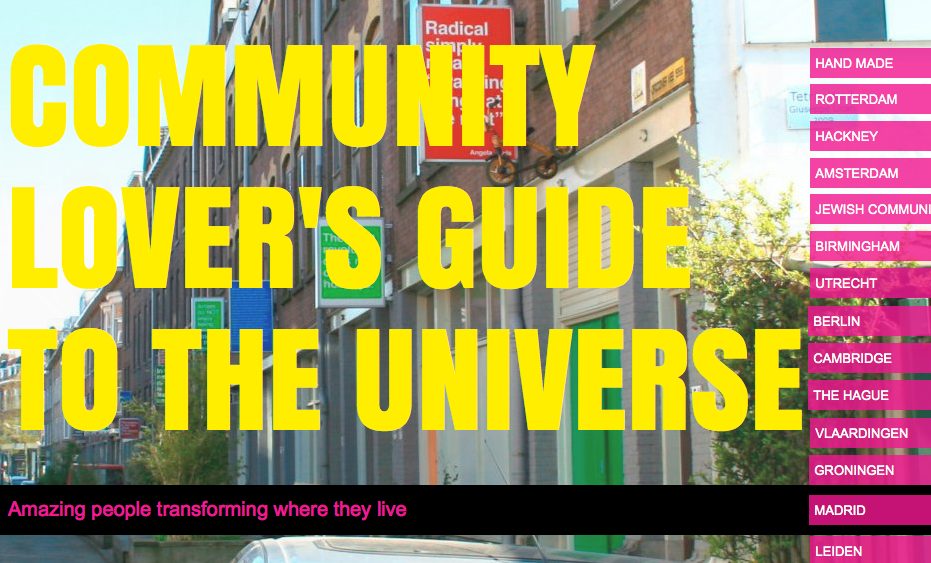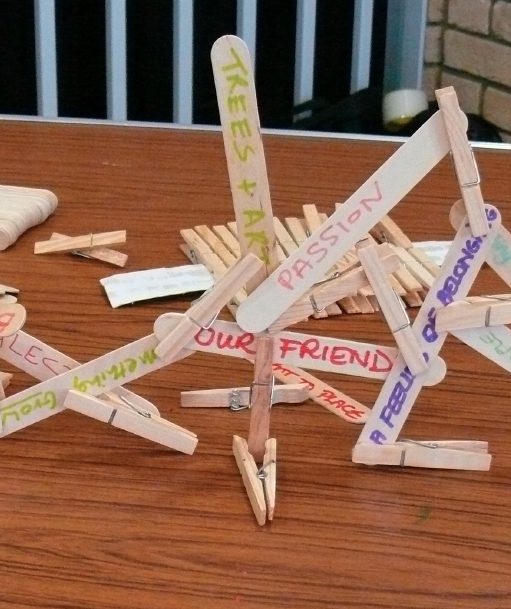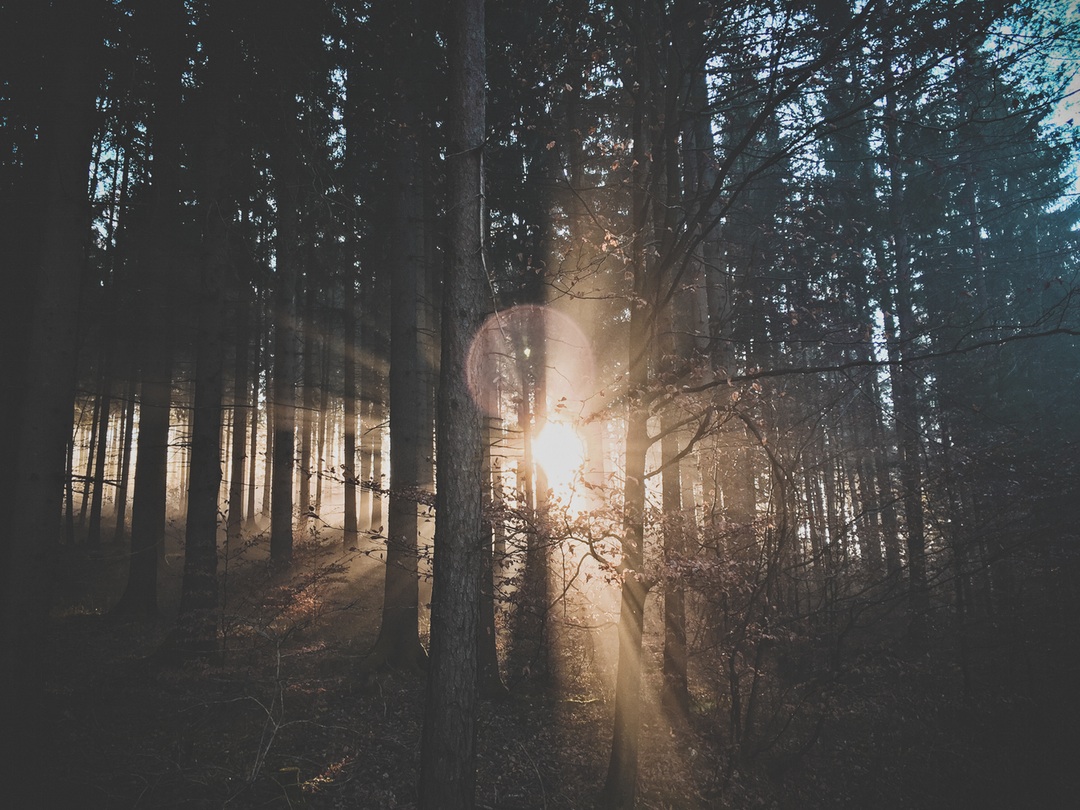– a guest post from Mark Langdon, Chair, North United Communities
The Easter Saturday event was a brilliant example of community assets in motion. The church hall filled with local people some organising cooking and organising and many having fun chatting to friends and relatives neighbours and new faces (like me). I was there in my role as Chairperson of North United Communities staffing the stall that IRISS had provided with the aim of capturing what people liked about their area and themselves.
Tellingly the biggest challenge for most folk was saying something good about themselves. For me the experience was fantastic so many great people finding time to spend together mothers and fathers helping their kids showing patience and providing encouragement. The best way to give you a sense of the day – apart from a picture of me wearing bunny ears (which I do every Easter) – is to let you read the words that were hung on the listening tree.
The day recharged my faith in the inherit goodness of people and reminded me how little people are asking for in their communities – security, warmth, food and hope for the future – they deserve all that and a lot more.
